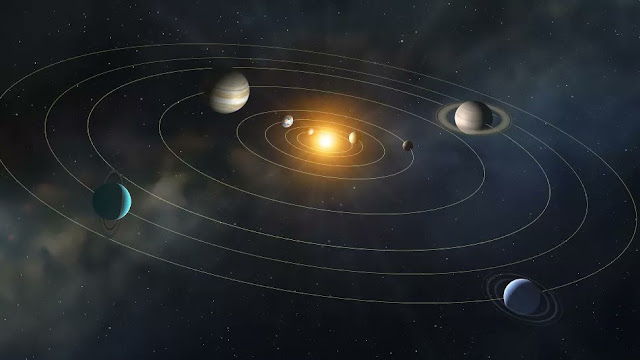It is considered very attractive .. .. it influence causes
romantic moods ! .. .. Earth's Moon is
the only place beyond Earth where humans have set foot. In 1969, Neil Armstrong's first footstep on
the Moon signified a giant leap for humanity. It also symbolised the United
States’ victory in the space race while reinforcing its geopolitical supremacy.
Now, more than five decades later, another ‘space race’ to the Moon appears to
be underway. But this time, joining the U.S. and the Soviet Union (now Russia)
on this front is China.
The
brightest and largest object in our night sky, the Moon makes Earth a more
livable planet by moderating our home planet's wobble on its axis, leading to a
relatively stable climate. It also causes tides, creating a rhythm that has
guided humans for thousands of years. The Moon was likely formed after a
Mars-sized body collided with Earth.
After
going through a bleak 2022 with no successful space launch, a situation unseen
in 18 years, Japan said that it aims to
become the second country after the US to land astronauts on the moon, adding
it will strengthen cooperation with the US to counter China's space endeavours.
However, to some, Japan's putting its astronauts on the moon
via another country's spacecraft, while calling itself "second in
history" is laughable, warning that if Japan continues to rely heavily on
the US, it will eventually lose the ability to walk on its own, thus becoming a
puppet of the US.
Frederick William Herschel
[1738 – 1822] was a German-born British astronomer and composer. He
frequently collaborated with his younger sister and fellow astronomer Caroline
Herschel. Born in the Electorate of
Hanover, William Herschel followed his father into the military band of
Hanover, before emigrating to Great Britain in 1757 at the age of nineteen. Herschel
constructed his first large telescope in 1774, after which he spent nine years
carrying out sky surveys to investigate double stars. Herschel published
catalogues of nebulae in 1802 (2,500 objects) and in 1820 (5,000 objects). The
resolving power of the Herschel telescopes revealed that many objects called
nebulae in the Messier catalogue were actually clusters of stars. Herschel pioneered the use of astronomical
spectrophotometry, using prisms and temperature measuring equipment to measure
the wavelength distribution of stellar spectra.
Like the classical planets, Uranus is visible to the naked eye, but it was never recognised as a planet by ancient observers because of its dimness and slow orbit. Sir William Herschel first observed Uranus on 13 March 1781, leading to its discovery as a planet, expanding the known boundaries of the Solar System for the first time in history and making Uranus the first planet classified as such with the aid of a telescope.
Uranus
is the seventh planet from the Sun. It is named after Greek sky deity Uranus
(Caelus), who in Greek mythology is the father of Cronus (Saturn), a
grandfather of Zeus (Jupiter) and great-grandfather of Ares (Mars). Uranus has
the third-largest planetary radius and fourth-largest planetary mass in the
Solar System. The planet is similar in composition to Neptune, and both have
bulk chemical compositions which differ from those of the other two giant
planets, Jupiter and Saturn (the gas giants). For this reason, scientists often
distinguish Uranus and Neptune as "ice giants". As with gas giants,
ice giants lack a well-defined solid surface. Like the other giant planets, Uranus has a
ring system, a magnetosphere, and numerous moons.
Uranus, the seventh planet of the Solar System, has 27 known moons,
most of which are named after characters that appear in, or are mentioned in,
the works of William Shakespeare and Alexander Pope. Uranus's moons are divided into three groups:
thirteen inner moons, five major moons, and nine irregular moons.
The first two moons to be discovered were Titania and Oberon,
which were spotted by Sir William Herschel on January 11, 1787, six years after
he had discovered the planet itself. The
other three ellipsoidal moons were discovered in 1851 by William Lassell (Ariel
and Umbriel) and in 1948 by Gerard Kuiper (Miranda). These five may be in
hydrostatic equilibrium, and so would be considered dwarf planets if they were
in direct orbit about the Sun. The remaining moons were discovered after 1985,
either during the Voyager 2 flyby mission or with the aid of advanced
Earth-based telescopes.
Interesting !
11.1.2023


No comments:
Post a Comment